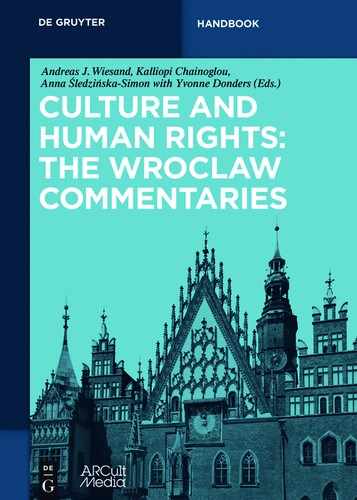Preface II
Cultural rights are increasingly taking their rightful place in the international human rights’ arena. The Council of Europe’s European Court of Human Rights has been largely instrumental in improving the standing of cultural rights through its dynamic interpretation of the different Articles of the European Convention on Human Rights, gradually recognising substantive rights which may fall under the notion of ‘cultural rights’ in a broad sense, and establishing key principles for future development.
The publication Culture and Human Rights: The Wroclaw Commentaries aims to bring together these references to cultural rights as an integral part of human rights, in an easy-to-digest and unique resource. As such, and through its comparisons with other international treaties and related case-law, it contains a vast treasure of concise topical articles and detailed keyword sources, offering insight into the key role which culture plays in human development and in keeping human rights alive. Perspectives offered by this Handbook may not be shared by every reader. Whilst the values of democracy and human rights, and the legal and institutional systems which protect them, are products of culture, they also protect culture itself: culture as seen in a broader sense, including the arts, creativity, heritage and aspects of identity formation and belonging, as well as all related economic, social and educational impacts.
Culture and cultural co-operation have played a major role in bringing Europeans closer together, through increased dialogue since the creation of the Council of Europe in 1949 and once more after the fall of the Berlin wall in 1989. Today, Europe is facing serious challenges in light of globalisation, interdependency, mobility, migration and the difficulties linked to managing diversity. Some say the European project is in danger and Europe is in need of a new narrative. This is why it is even more pertinent in the current context to understand the richness of legal and political frameworks for culture and human rights, and their evolving nature, to keep up with societal changes. This richness is reflected in the case law of the Council of Europe’s European Court of Human Rights.
The Council of Europe’s legal protection system further includes the work of the Commissioner of Human Rights, the Committee of Ministers, advisory bodies like the ‘Venice Commission’ and parliamentary control mechanisms, as well as activities of the Conference of International Non-Governmental Organisations. Collectively, this is a well-tuned and forceful tool kit, allowing for fact-finding, monitoring, guidance and standard-setting.
I wholeheartedly invite you to use this rich commentary collection and take the opportunity to congratulate the authors and editors on their outstanding achievement.
Gabriella Battaini-Dragoni
Deputy Secretary General of the Council of Europe
